Carlo Riva realised that building boats well was not enough, boats had to be mechanically reliable as well and, above all, they had to be sold at a remunerative price that rewarded their quality.
The aesthetic image must highlight the fact that engineer Riva’s boat is not just a design product but also the aesthetic result and the fruit of a project. The result of an optimal search between form and function, quality, reliability and durability even in its economic value.
The quality’s image therefore starts with design, is promoted by personality and performance and is promoted as such.
In 1957 the engineer Carlo Riva met Giorgio Barilani, a graphic designer from Bologna who at the time was designing aircraft models for specialised American magazines.
Mr. Carlo Riva nicknamed him the ‘golden pen’ because of his skill in perspective drawing and his excellent ideas.
The search for the exclusive boat led to the design and production of more and more original components, or alternatively one would proceed with the purchase by obtaining customisation and supplier exclusivity.
Discover in detail the different Riva Aquarama series and the features of each model.
– AQUARAMA (first series)
In 1962 the Aquarama officially went into production.
From this moment, series production of the Riva Aquarama increased so much that it became a mass production.
The hull is perfectly identical to the previous model, the Tritone (considered the father of the Aquarama) but with noticeable technical and aesthetic improvements.
The most noticeable are the anchor housing at the bow closed with a hatch, the gunwale perimeter, the polished Honduras dashboard and the snout (nose) of the first series, known as a caiman, with the integrated fairlead.
In particular, in the first series, the originality of having white enamel with two coral-coloured waterline lines can be seen, which echo the colours used in the upholstery in Resinflex vinyl with ivory stitching and coral and black piping.
From this model began the origin of the myth that we all know today.
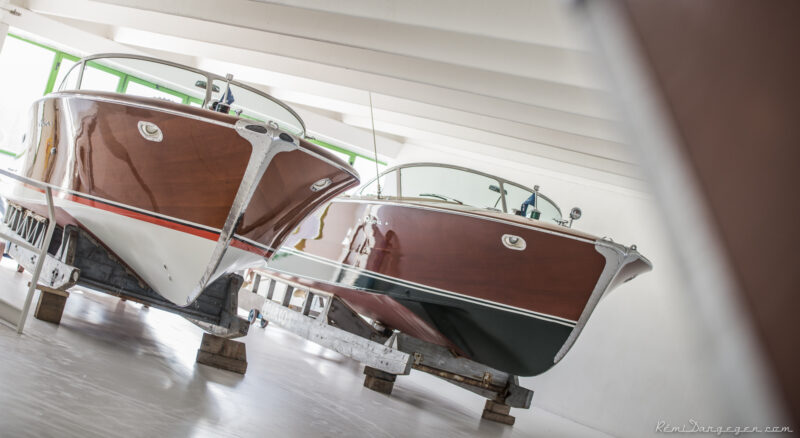
comparison between Aquarama I series & Tritone
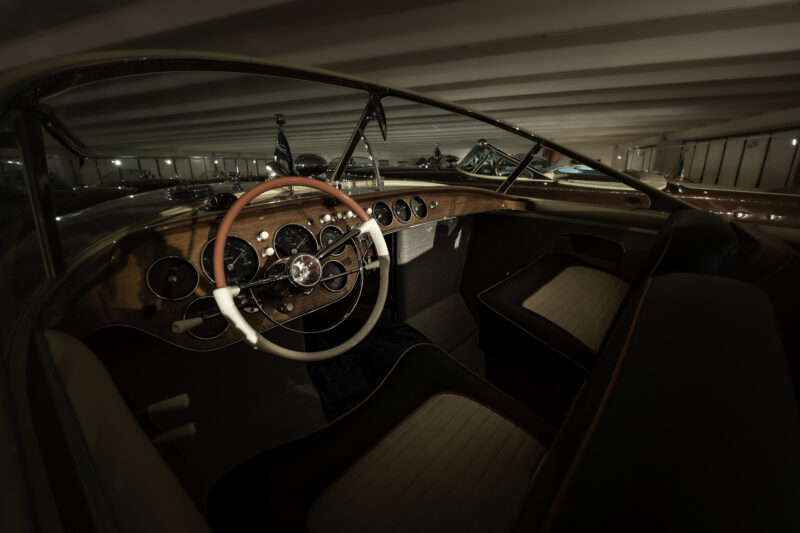
coral and black upholstery details
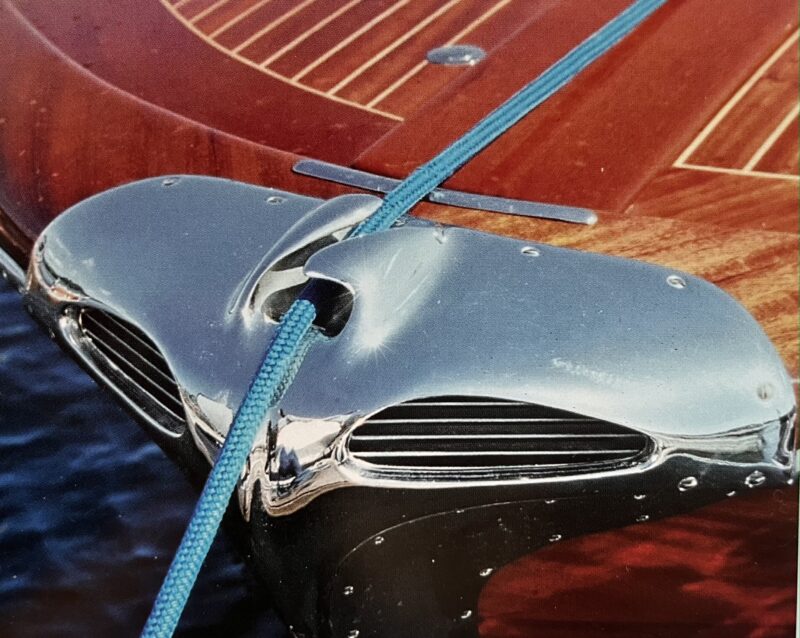
The snout (caiman) with the integrated fairlead
– AQUARAMA SUPER
At the end of 1963 the Super Aquarama also became available for sale.
The series was enriched with updates in common with the Tritone and significant changes compared to the regular Aquarama, for example the Super had a hull about 20 cm longer at the stern.
This significant change in size was due to the large tanks added due to the increase in power to 320 hp Riva Crusader for each engine.
The new nose is now called a shark, due to its unique design.
A great innovation is the upholstery on the Super from 1967 onwards, it is in cream-coloured vipla with lobster-coloured edging and backrests.
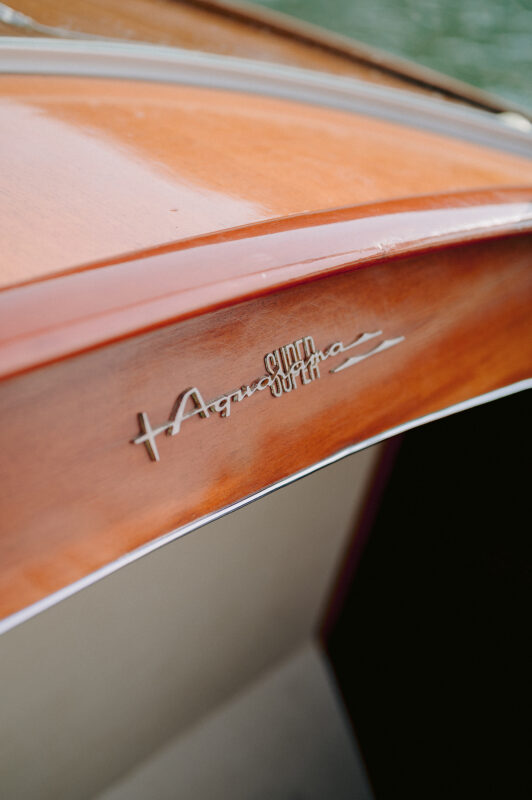
Dashboard in polished Honduras (mahogany) with Aquarama Super lettering
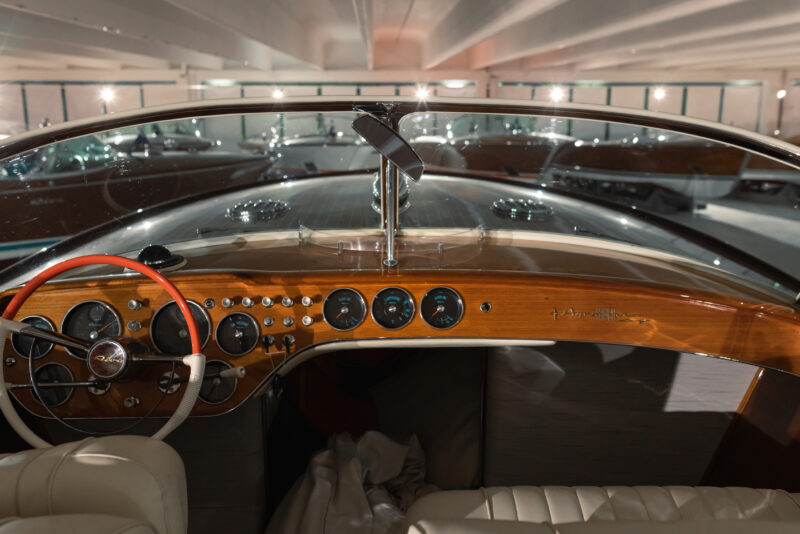
Dashboard and upholstery details in coral and white Vipla
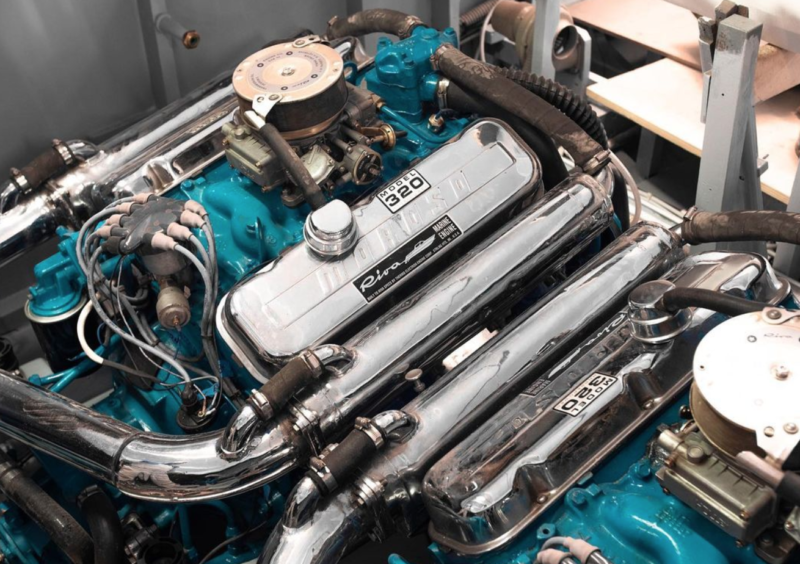
Aquarama Super 2x320HP V8 GM Riva engines
AQUARAMA SPECIAL
In 1971, architect Giorgio Barilani, the shipyard’s designer since 1957, introduced a modification to the boat’s transom, creating a passageway to facilitate the ascent of the swim ladder. This new version has a remarkable length, the total hull measurement is 8.75 metres.
Power is also further increased thanks to the motorisation of two Riva Crusader 8V engines of 350HP each.
Its streamlined line gives the boat attitude and elegance.
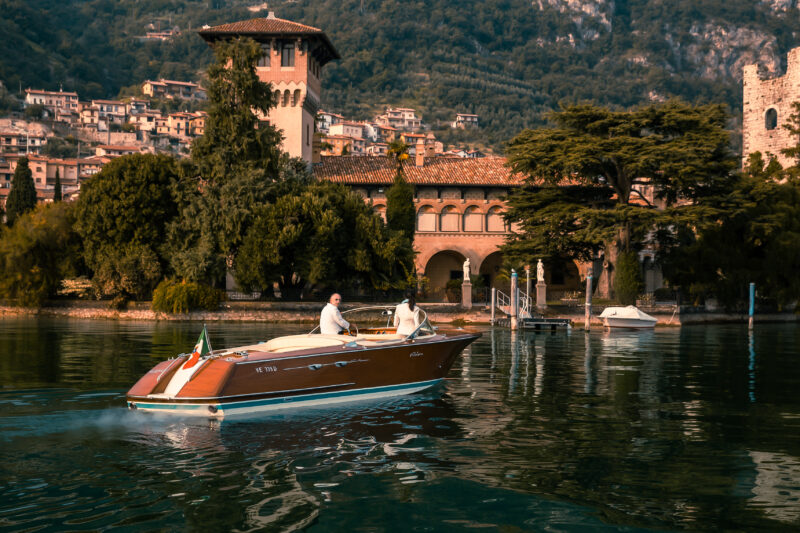
Aquarama Special transom detail
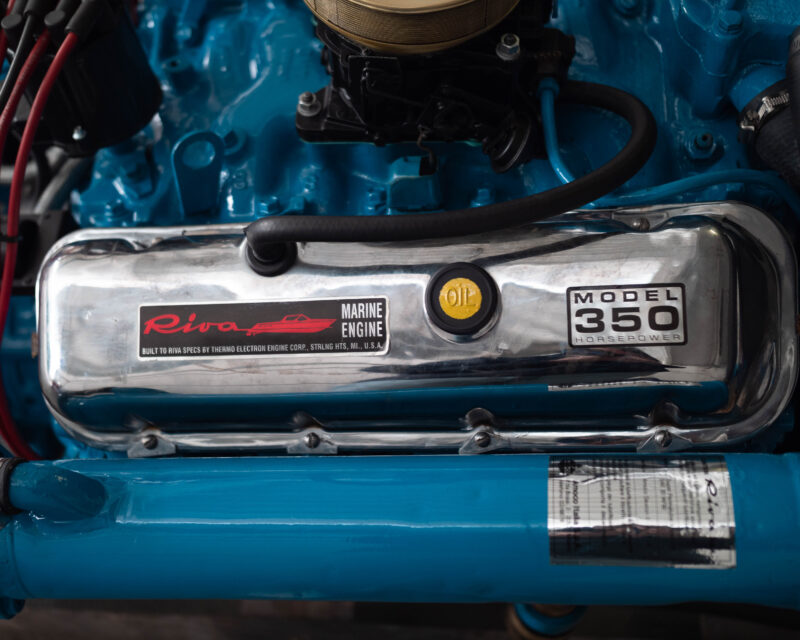
Aquarama Special 2x350HP V8 GM Riva engines
Other ramarkable details are the side air intakes in the first series of Aquarama and Aquarama Super. In these models there are no less four small air intakes with a detailed design as shown in the photo below
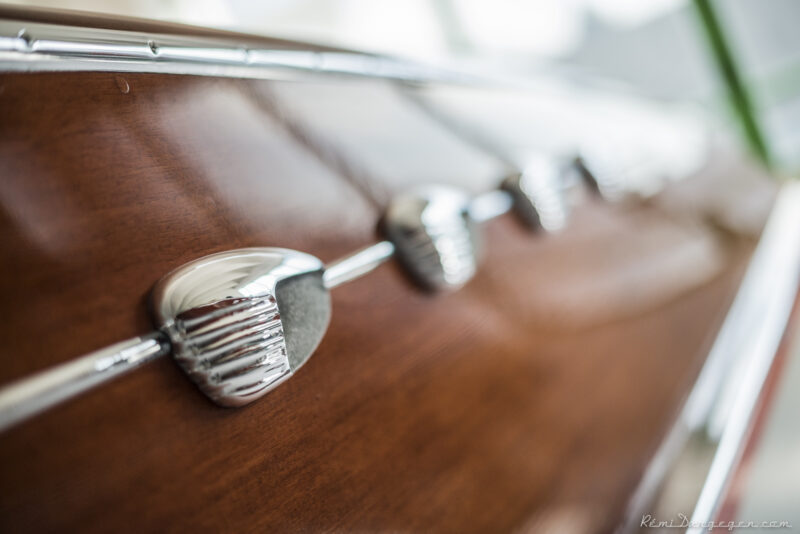
Differently from the last models in which there were only two larger side air intakes and a completely new design compared to the previous ones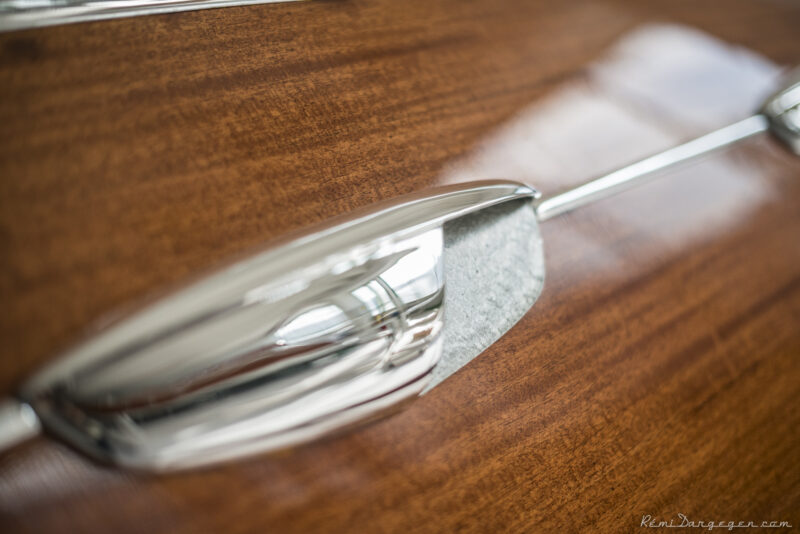
In addition to the following models of Aquarama there was also an exception called the Riva Aquarama Lungo.
It was part of a series of just seven boats, fitted out to use the latest Super hulls, in which Riva 220 engines were installed.
The Aquarama was born in 1962 and the Aquarama Special was the best seller from 1972 to 1996. It is the only wooden motorboat that has remained in the list for so long, based from a design that has been updated several times and finds its origins in the Tritone of 1950.